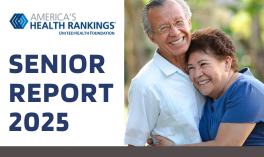The Quality of Life in Hawai‘i: 2022 Update is here. This is the second update by the Research and Economic Analysis Division of the Hawai‘i Department of Business, Economic Development, and Tourism (DBEDT). Overall, Hawai‘i’s Quality of Life (QOL) is in good standing compared to the nation and has improved over time. Over 66 percent of Hawai‘i’s QOL indicators performed better compared to the nation. Hawai‘i improved over time in about 68 percent of the QOL indicators.
Here are some highlights from each of the 6 QOL domains:
- Economy: The unemployment rate in the state of Hawai‘i was 5.7%, which was higher than the national rate of 5.3% (2021).
- Education: The percentage of people ages 25 years and older in the state of Hawai‘i with less than a high school degree was 7.1%, which was less than the national percentage of 10.6% (2021).
- Environment: The state of Hawai‘i released 1.8 pounds of toxic chemicals per person, which was less than the national average of 9.9 pounds per person (2021).
- Health: Honolulu County had the lowest percentage of children without health insurance (2.5%), followed by Maui County (3.0%), Hawai‘i County (3.5%), and Kaua‘i County (4.4%) (2021).
- Housing & Transportation: Honolulu County had the highest percentage of renters that spent over 30% of their household income on rent (54.8%), followed by Kaua‘i County (53.4%). Maui County (52.9%), and Hawai‘i County (43.9%) (2021).
- Social: The violent crime rate in the state of Hawai‘i was 254.2 per 100,000 people, which was lower than the national rate of 398.5 per 100,000 people (2020).
The University of Hawai‘i Center on the Family (COF), was contracted by the Hawai‘i Department of Business, Economic Development, and Tourism (DBEDT) to help identify trends and factors relating to the well-being of communities in the state of Hawai‘i. The result was a publication called the Quality of Life in Hawai‘i 2009 Report: Framework, Indicators, and Technical Documentation, which presented a comprehensive QOL framework and indicators that would allow stakeholders to cost-effectively monitor changes in the communities’ QOL. This is the third report in the series.
The Quality of Life in Hawai‘i reports include:
- QOL framework, QOL indicators, data collection, analysis methods, and data limitations.
- Summary of findings on QOL in Hawai‘i relative to the national average, progress over time, and variation across counties.
- A breakdown of the most recent data for each QOL domain and its associated indicators.
View the full reports here:



